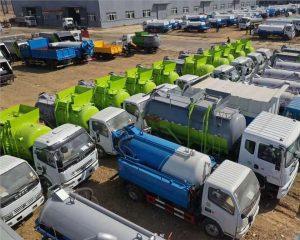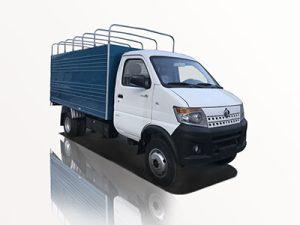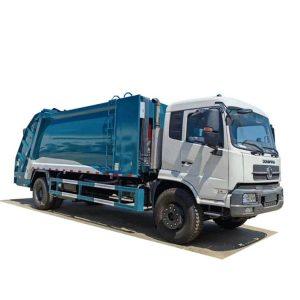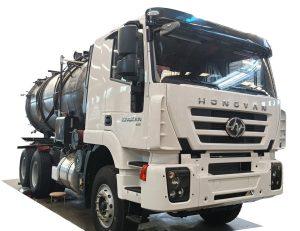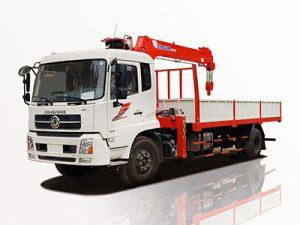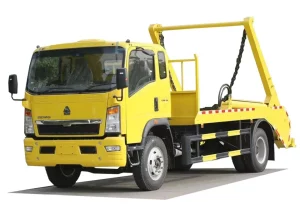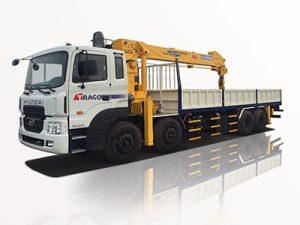Monday to Saturday - 8:00 -17:30
Hoist for Truck: A Comprehensive Guide
In the world of heavy-duty vehicles, a hoist for trucks is an essential piece of equipment that enhances efficiency and safety. Whether you are in the construction, automotive repair, or logistics industry, understanding the intricacies of hoists can significantly impact your operations. In this article, we will explore the different types of truck hoists, their applications, installation processes, maintenance needs, and much more.
Understanding Hoists for Trucks
A hoist is a device used for lifting or lowering a load. In the context of trucks, these devices play a crucial role in various applications such as transporting materials, vehicle maintenance, and loading goods. There are multiple types of hoists designed specifically for different truck applications.
Types of Truck Hoists
| Type of Hoist | Application | Load Capacity |
|---|---|---|
| Hydraulic Hoist | Loading and unloading freight | Up to 30 tons |
| Pneumatic Hoist | Automotive repair | Up to 15 tons |
| Electric Hoist | General lifting tasks | Up to 10 tons |
| Mechanical Hoist | Maintenance and service | Up to 5 tons |
Hydraulic Hoists
Hydraulic hoists use liquid pressure to lift heavy loads efficiently. This type of hoist is widely used in industries that require lifting heavy machinery or equipment.
Pneumatic Hoists
Pneumatic hoists operate using compressed air and are favored for their lightweight design and ease of use. They are particularly useful in automotive repair settings.
Electric Hoists
Electric hoists provide consistent lifting power, making them ideal for frequent lifting operations. These hoists typically come with safety features and can be easily controlled.
Mechanical Hoists
Mechanical hoists, which are often simpler in design, use gears and levers to lift loads. They are most suited for lighter loads and smaller tasks.
Choosing the Right Hoist for Your Truck
Choosing the correct hoist for your truck is critical to ensure safety and efficiency. Here are some factors to consider:
Load Capacity
Always choose a hoist that can handle more weight than your maximum load. This adds a margin of safety and increases the longevity of the hoist.
Type of Operation
Determine whether you need a manual, pneumatic, or electric hoist based on the nature of your work. Electric hoists are more efficient for repetitive lifting, while manual hoists are simpler for occasional use.
Space Availability
Consider the space where the hoist will be installed. For limited spaces, compact hoists, such as portable or foldable models, may be more suitable.
Installation of Truck Hoists
Proper installation of a truck hoist is essential for safety and functionality. Here’s a step-by-step guide:
Step 1: Gather Tools and Equipment
Before beginning, ensure you have all necessary tools and safety gear. Common tools include bolts, wrenches, and a level.
Step 2: Choose the Installation Location
Identify a sturdy and level surface, such as a concrete floor, to install the hoist. Ensure that the area is clear and free from any obstructions.
Step 3: Secure the Hoist Base
Attach the hoist base to the ground using appropriate anchor bolts. Make sure to check the manufacturer’s recommendations for specific anchoring requirements.
Step 4: Connect Power Supply
If you are installing an electric hoist, connect it to a suitable power source. Ensure that the electrical system can handle the power requirements of the hoist.
Note
Always consider hiring a professional for installations involving electrical components to ensure safety compliance.
Step 5: Test the Hoist
Once installed, perform a test run to ensure the hoist operates smoothly and without any issues. Check for any unusual noises or malfunctions.
Maintenance and Safety Tips
Regular maintenance ensures the longevity and safe operation of your truck hoist. Here are some essential maintenance tips:
Daily Checks
Inspect cables, chains, and hooks for any signs of wear or damage daily. Look for frayed or corroded areas that could fail.
Lubrication
Apply appropriate lubricants to moving parts as needed. This helps to prevent rust and keeps the machinery operating smoothly.
Regular Inspections
Schedule periodic inspections by a qualified technician to assess the overall condition of the hoist and ensure it meets safety standards.
Documentation
Keep a log of maintenance activities, inspections, and repairs. This documentation can assist in identifying patterns and addressing recurring issues.
Training
Ensure that all operators are trained in the proper use of the hoist. This includes understanding weight limits, operational guidelines, and emergency procedures.
Applications of Hoists in Various Industries
Hoists are used in numerous industries, each with unique applications. Here are some examples:
Construction
In construction, hoists are essential for moving heavy materials like steel beams and concrete blocks, facilitating efficiency and safety on job sites.
Aerospace
In the aerospace sector, hoists are utilized to lift and position aircraft parts, ensuring precision in assembly and maintenance.
Automotive
Automotive repair shops frequently use hoists to lift vehicles for maintenance and repairs, allowing mechanics to work efficiently and safely.
Manufacturing
Manufacturers use hoists to transfer heavy items across factories, reducing manual labor and improving workflow.
Cost Considerations for Truck Hoists
The cost of a truck hoist can vary significantly based on factors such as type, load capacity, and features. Here is a breakdown:
| Type of Hoist | Price Range (USD) |
|---|---|
| Hydraulic Hoist | 2,000 – 5,000 |
| Pneumatic Hoist | 1,500 – 3,000 |
| Electric Hoist | 1,000 – 4,000 |
| Mechanical Hoist | 500 – 1,500 |
Note
While initial costs are important, consider long-term costs like maintenance, training, and downtime to derive the true cost of ownership.
Future Trends in Truck Hoist Technology
As industries evolve, so do the technologies behind truck hoists. Here are some trends shaping the future:
Smart Technology Integration
The integration of IoT (Internet of Things) technology is set to make hoists smarter. This can include remote monitoring of load capacities, maintenance schedules, and real-time performance tracking.
Enhanced Safety Features
Manufacturers are continuously innovating safety features such as automatic shutoffs, overload protection, and better ergonomics to reduce the risk of accidents during operation.
Eco-Friendly Designs
With a push for sustainability, new hoist designs focus on energy efficiency and reduced environmental impact, utilizing recyclable materials and energy-efficient motors.
FAQ Section
1. What is the weight capacity of a typical truck hoist?
Typical truck hoists can have a weight capacity ranging from 5 tons for mechanical hoists to up to 30 tons for hydraulic models.
2. How often should I inspect my truck hoist?
It is recommended to inspect your hoist regularly; ideally, daily checks for visible wear and damage, with comprehensive inspections at least once a year.
3. Can I install a truck hoist myself?
While some hoists can be installed by individuals with mechanical skills, it is advisable to hire a professional for electric hoists to ensure safety compliance and correct installation.
4. What maintenance is required for a hydraulic hoist?
Maintenance for a hydraulic hoist includes daily checks for leaks, lubrication of moving parts, and periodic professional inspections to assure it operates efficiently and safely.
5. Are there portable hoists available for trucks?
Yes, there are portable hoists designed for trucks, which are lightweight and easy to transport, making them useful for various applications on-site.
6. What type of hoist is best for automotive repair?
Pneumatic and electric hoists are commonly favored in automotive repair due to their efficiency and ease of use, making it easier for mechanics to access different parts of vehicles.


